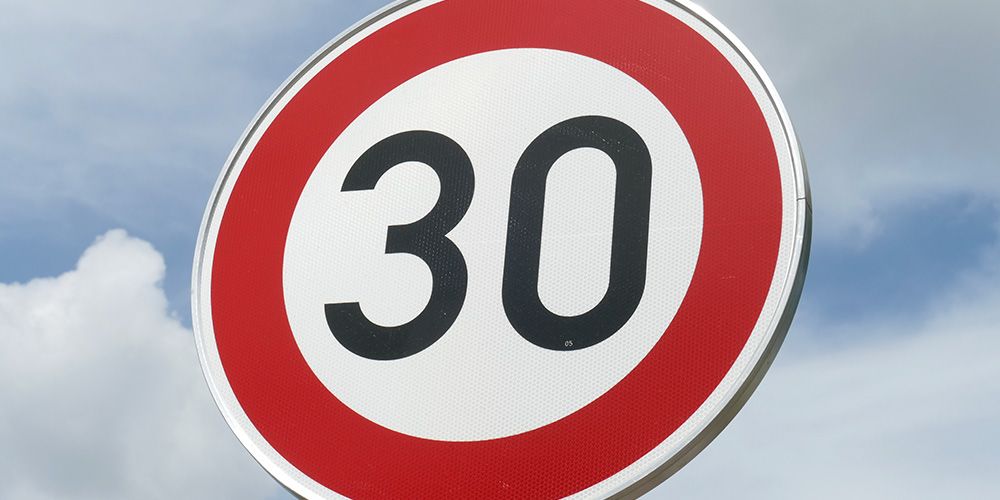30 km/h speed limit for traffic safety reasons
Speed limits are often in place in front of primary schools and kindergartens and on stretches of road where accidents often occur. These provide protection (but not only) for children and generally draw the attention of road users to particularly dangerous areas.
30 km/h speed limit for noise protection reasons
Noise is particularly disturbing when we are asleep. The 30 km/h speed limit regulations serve to protect the night’s rest. This protection is important because permanent night-time traffic noise above 55 decibels is likely to lead to increased cardiovascular diseases. Almost 340,000 people are affected by this on Berlin’s main roads.
The 30 km/h speed limit at night (10-6 a.m.) is part of an overall noise reduction concept, which is complemented by other measures, such as the replacement of noisy road surfaces. The 30 km/h speed limit at night does not solve the city’s noise problems completely. However, they will mean that many Berliners will be able to sleep a little more peacefully in the future.
30 km/h speed limit for reasons of air pollution control
Berlin’s air must improve! Despite extensive measures, there is still a danger that the binding European limits for nitrogen dioxide (NO2) and particulate matter (PM10) will be exceeded in our city. The target values proposed by the World Health Organisation (WHO) are even exceeded across the board in Berlin. There are clear results that 30 km/h speed limits can improve the air we breathe.
Speed limit 30 is an effective measure to improve air quality if the quality of traffic flow can be maintained or improved. This is because start-up processes are then shortened and fewer emissions are emitted. Emissions from tyre abrasion and road swirl are also reduced, as friction forces and turbulence are lower at low speeds. Emissions from brake abrasion are also reduced, because the braking time and force are lower than at 50 km/h. In Berlin, the effect of 30 km/h on air quality has been directly tested over several years.

